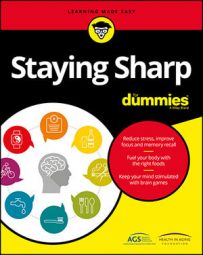 Hatice Yardım @ Unsplash
Hatice Yardım @ UnsplashReading retention is a big issue in educational circles. Having the ability to read a sentence, pronounce all the words fluently, and have a vocabulary wide enough that doesn't necessitate referring to a dictionary is one thing. But having the ability to remember what you read is something else entirely. If you can't remember what you read, why read at all?
If you want to make sure you retain what you read, try to use one or part of the various study systems developed by educators. Along with psychologists, they've been studying how people retain what they read for a long time. Learn from their experience!
One of the oldest such systems is called SQ3R. (Many of these systems have names that make them appear more complicated than they really are.) The SQ3R system works like this:
S = Survey the book.To begin with, consider what you do when you open a nonfiction book you hope to be able to remember after you've completed it. If you simply barrel into reading it without looking it over, you may find yourself wondering what's coming up or not understanding how this body of knowledge is organized.Q = Question. Generate questions based on your survey.
R = Read the book.
R = Recite the material.
R = Review.
Survey the book
The first step in remembering what you read is to survey the material. Scan the book cover to cover. Read the dust jacket (if it has one) and the preface. Then read the acknowledgments section to get an idea of what the author went through to write the book, who the author was influenced by, and who made significant contributions.Scan the table of contents to see how the book is organized and how the chapters present the information. Read the chapter summaries and look at the graphs, pictures, and diagrams. This way, you learn a great deal about the subject before you actually read the book. In many ways, you've begun to glimpse the big picture that the book offers. This overview gives you a framework on which to hang the new information you gather as you read the book.
Develop questions
Generate questions based on what you saw in your scan of the book. These questions can provoke other thoughts about what you expect when reading further. Later, during the actual reading (remember, you haven't even begun reading yet), your questions may be answered as you begin to master the subject matter. If not, you can always find more books on the subject and read further to get more answers.Read the book
The third step in the SQ3R system is to read everything. Don't skim. You can highlight or underline the important bits, such as the passages that answer the questions you formulated, as you go along.Don't underline or highlight too much. Not everything you read is intended to be a kernel of truth or the heart of the subject matter. When you go over the material later, you don't want to sift through page after page of over-underlined sentences, wondering why you went crazy with your pen. Remember that a highlighter should light up the high points.
In addition to underlining, use vertical lines to the right or left of the text to indicate particular sections that are important. These sections elaborate upon the sections that you underline above or below the vertical lines. Use a double line to indicate that the section is particularly important.
Many people do their underlining on the second reading to ensure that they don't underline points that don't end up being that important. If you don't have time for two readings, you can underline as you do your one read through the material. (Just don't let your highlighter get carried away and underline every word as you read it!)Recite the material
After you finish reading the entire book, you can now move to the next step of the SQ3R system: reciting. Reciting the material can help you integrate, understand at a deeper level, and pull everything together. If you can explain the material to another person, you really do understand it.One advantage of teaching is that by speaking so much out loud, the teacher is forced to really know the material. In this way, teaching is learning.
Spend as much time as possible on the material that you aren't quite sure about. As you do, you bring it into focus with the material you already understand and deepen your memory of it.
Review main points and notes
Your job isn't completely done yet. The next task is to review. Here's your chance to go over it all again. Make use of your underlined passages and highlight as review your notes. In fact, incorporating review into your reading process is always a good idea. After you read each section (even the first time through), review the main points in that section.Because most forgetting occurs soon after information is read, the reviewing step allows you the opportunity to really lay down those memories in a comprehensive way, inputting them into long-term storage.

